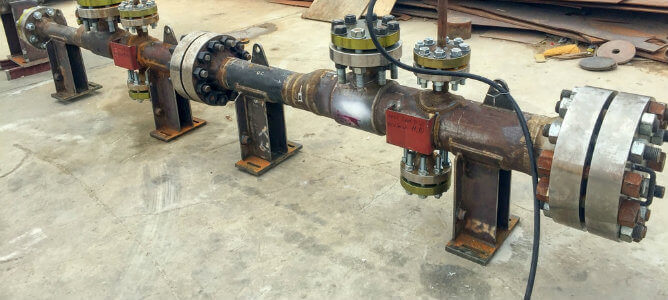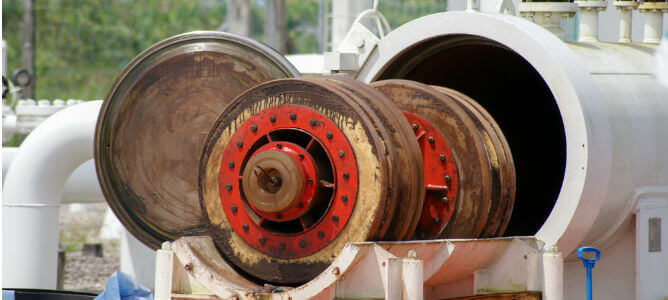
Pipeline Leak Detection & Testing: Methods & Best Practices
Leak detection is not fancy work, but it is necessary. Even a small unnoticed leak can cause product loss and headaches. Operators know this, and most have learned that monitoring systems and testing programs must meet PHMSA, API 1130, API 1155, and API 1175 requirements if you want to stay in compliance and avoid shutdowns.
What is Pipeline Leak Detection?
Leak detection is a mix of instruments, sensors, and field procedures used to find or confirm a leak. It is data-driven work. You are tracking pressure drops, mass flow imbalance, or temperature shifts that show something is off.
Different systems perform better depending on the product. Gas behaves differently from liquids, and CO₂ does not act like crude. The goal stays the same: detect the leak fast, locate it, and shut things down before it spreads. A solid system can spot leaks as small as one percent of flow within minutes.
Common Causes of Pipeline Leaks
Typical causes include:
- Corrosion: Internal or external, especially when coatings are damaged or cathodic protection fails.
- Valve or fitting failure: Worn seals or flanges lose pressure over time.
- Weld or fabrication defects: Misalignment or porosity create weak points.
- Third-party interference: Excavators and heavy equipment are repeat offenders.
- Overpressure or thermal stress: Fast shutdowns or large temperature swings fatigue metal.
- Human error: Wrong valve opened or closed at the wrong time.
Routine inspection, pigging, and steady data trending catch most of these before they become bigger issues.
Pipeline Leak Detection Methods
External Detection Systems
External systems monitor signals from escaping product or temperature change:
- Acoustic sensors: Identify sound patterns from fluid leaks.
- Fiber optic lines: Measure temperature and vibration changes along the line.
- Vapor sensing cables: Detect hydrocarbons in surrounding soil.
- Infrared or drone surveys: Thermal cameras identify temperature differences caused by leaks.
Internal Detection Systems
These rely on process data inside the pipe:
- Flow or mass balance: Compare inlet versus outlet. If it does not match, a leak is likely.
- RTTM (Real-Time Transient Model): Simulates flow behavior and flags anomalies.
- Pressure change tracking: Finds abnormal drops or rate shifts.
- CPM (Computational Pipeline Monitoring): Uses SCADA data for automated alarms.
CPM Notes
CPM systems are common in transmission networks but depend heavily on instrument accuracy. If transmitters drift or flowmeters are not calibrated, you get nuisance alarms or miss leaks. False alarms lead to operator fatigue, and people stop trusting the alerts. Always check data quality first.
Leak Testing Procedures
Leak testing confirms pipeline integrity during commissioning or after repair:
- Hydrostatic testing: Fill with water and pressurize up to 125% of MAOP. Good for strength checks but takes time to dry afterward.
- Pneumatic testing: Uses low-pressure air or inert gas for smaller systems.
- Nitrogen testing: Common for live or flammable systems. Inert, dry, and non-corrosive. Can be combined with purging and drying.
- Helium tracer: Used for detecting very small leaks, often in cryogenic or high-spec service.
- Localization: Bubble, ultrasonic, or pressure decay tests used once a leak is suspected.
Side note: nitrogen testing is also useful for verifying purge quality before introducing hydrocarbons.

Selecting the Right Detection System
System selection depends on:
- Pipeline size and product type
- Terrain and accessibility
- Detection sensitivity and alarm timing
- Compatibility with existing SCADA
RTTM systems, when tuned correctly, filter process noise effectively. They require accurate geometry, product data, and consistent instrumentation. Combining external and internal systems often gives better results, especially on long or remote lines.
Improving Pipeline Leak Detection Performance in the Field
A detection system should be:
- Sensitive: Small leaks, fast alarms
- Reliable: Minimal false alarms
- Accurate: Detects rate and location correctly
- Durable: Keeps working when one sensor fails
Good practices:
- Keep sensors calibrated.
- Use quality transmitters.
- Record baseline operating data.
- Train operators to read data, not just alarms.
- Verify function after every repair.
- Dry-test repaired lines with nitrogen before restart.
- Maintain detailed records for audits.
API RP 1175 Guiding Principles
API RP 1175 outlines how a Leak Detection Program (LDP) should operate. It is not a one-time setup but a management process:
- Culture & Strategy: From management to field crews, everyone must support leak detection. It only works when taken seriously.
- System Selection: Choose methods that fit your operation, not the cheapest option.
- KPIs and Metrics: Track detection time, false alarms, and response rates.
- Testing: Test sensors and software logic regularly under operating conditions.
- Control Center Procedures: Operators need clear steps for alarm response.
- Roles & Responsibilities: Define tasks for operators, engineers, and contractors.
- Training: Keep teams trained and tested. Experience alone is not enough.
- RCM (Reliability Centered Maintenance): Schedule service on transmitters, RTUs, and SCADA equipment.
- Performance Evaluation: Review annually and make adjustments.
- Continuous Improvement: Update as technology and data evolve.
NiGen’s Role in Pipeline Leak Detection and Testing
NiGen provides on-site nitrogen leak testing, purging, and drying. Mobile nitrogen generators deliver high-purity N₂ at stable pressure for field work. Nitrogen is inert and easy to handle, making it ideal for leak testing on hydrocarbon lines.
Why nitrogen testing works:
- Non-reactive, so no oxidation or ignition risk
- Simple to monitor pressure changes
- Safer for the environment than water-based testing
Our pipeline maintenance company also performs decommissioning and pressure verification. Their technicians handle real-world field conditions every day.
If you need help improving a leak detection program or require nitrogen testing, contact NiGen for on-site nitrogen generation and pipeline services.

